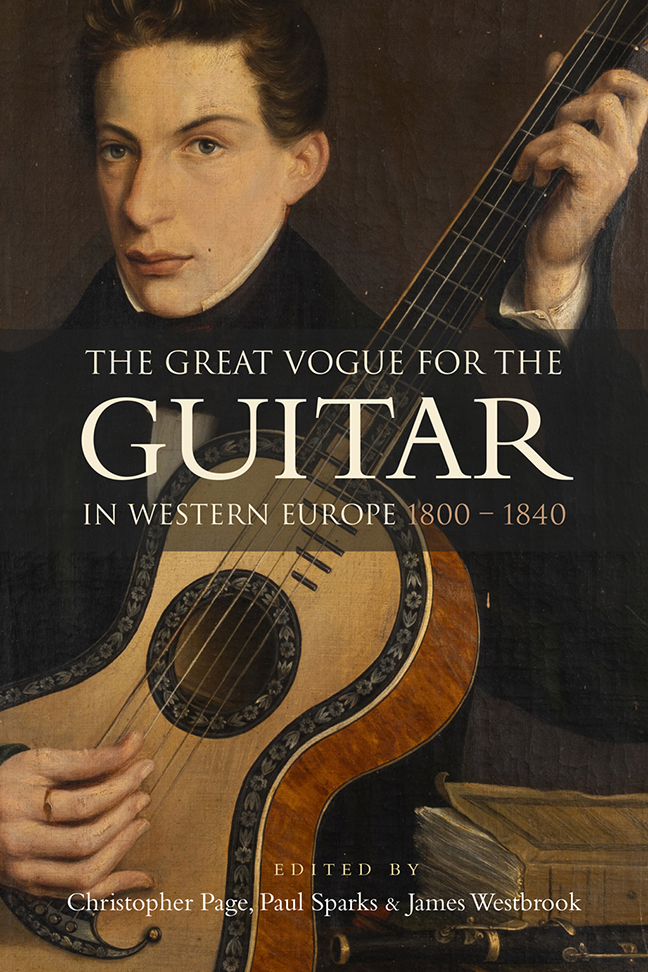Book contents
- Frontmatter
- Dedication
- Contents
- List of Illustrations
- Music examples
- The editors and the contributors
- Foreword
- Acknowledgements
- List of Abbreviations
- Introduction: The Great Vogue for the guitar
- I Contexts
- II The repertoire and its composers
- Appendix: A note on string-making
- Glossary of guitar terms
- Select Bibliography
- Index
15 - Emilia Giuliani (1813–1850)
Published online by Cambridge University Press: 10 January 2024
- Frontmatter
- Dedication
- Contents
- List of Illustrations
- Music examples
- The editors and the contributors
- Foreword
- Acknowledgements
- List of Abbreviations
- Introduction: The Great Vogue for the guitar
- I Contexts
- II The repertoire and its composers
- Appendix: A note on string-making
- Glossary of guitar terms
- Select Bibliography
- Index
Summary
The personal and musical life of Emilia Giuliani was for a long time largely forgotten, kept alive in the memory only by a few brief words alluding to her parentage: ‘She was a daughter of art.’ This sounds like a most fortunate ancestry, predestining her for the study and performance of music, and indeed it was so, for Emilia was the daughter of Mauro Giuliani, a brilliant and charismatic musician (Chapter 12). Yet we should not overlook the psychological pressure upon the children of artists, who may feel themselves constrained to match the achievements of their parents. Mauro's eldest son, Michele, knew something of this, for after making his debut alongside his father, as a guitarist, he wisely preferred to take a different path. He became a singer and a celebrated teacher who taught at the Paris Conservatoire for seventeen years.
Women could have a similar career at this date if they were exceptional singers, and they were highly valued as teachers, but it was generally assumed that a musical career was more appropriate to a man than a woman. (Only towards the end of Emilia's life, for example, did it become acceptable for talented female pianists to give concerto and recital performances in Paris, and in the 1840s the only international female concert performer was Clara Wieck Schumann.) In 1820, Abraham Mendelssohn wrote to his daughter, Fanny (the older sister of the famous composer), that music might become a profession for Felix, ‘whereas for you it can and should just be an ornament’. To be sure, Fanny had been given the same educational opportunities as her brother, which enabled her to speak several foreign languages fluently, to read Greek and Latin classics in the original, to compose Lieder by the age of 14 and to play the piano in an accomplished manner. Yet she was known and admired only by those who attended the Mendelssohns’ ‘Musical Sundays’ in Berlin; she played in the theatre only once and could not publish her compositions under her own name, a constraint that she was the first to accept as natural.
- Type
- Chapter
- Information
- The Great Vogue for the Guitar in Western Europe1800-1840, pp. 237 - 250Publisher: Boydell & BrewerPrint publication year: 2023

